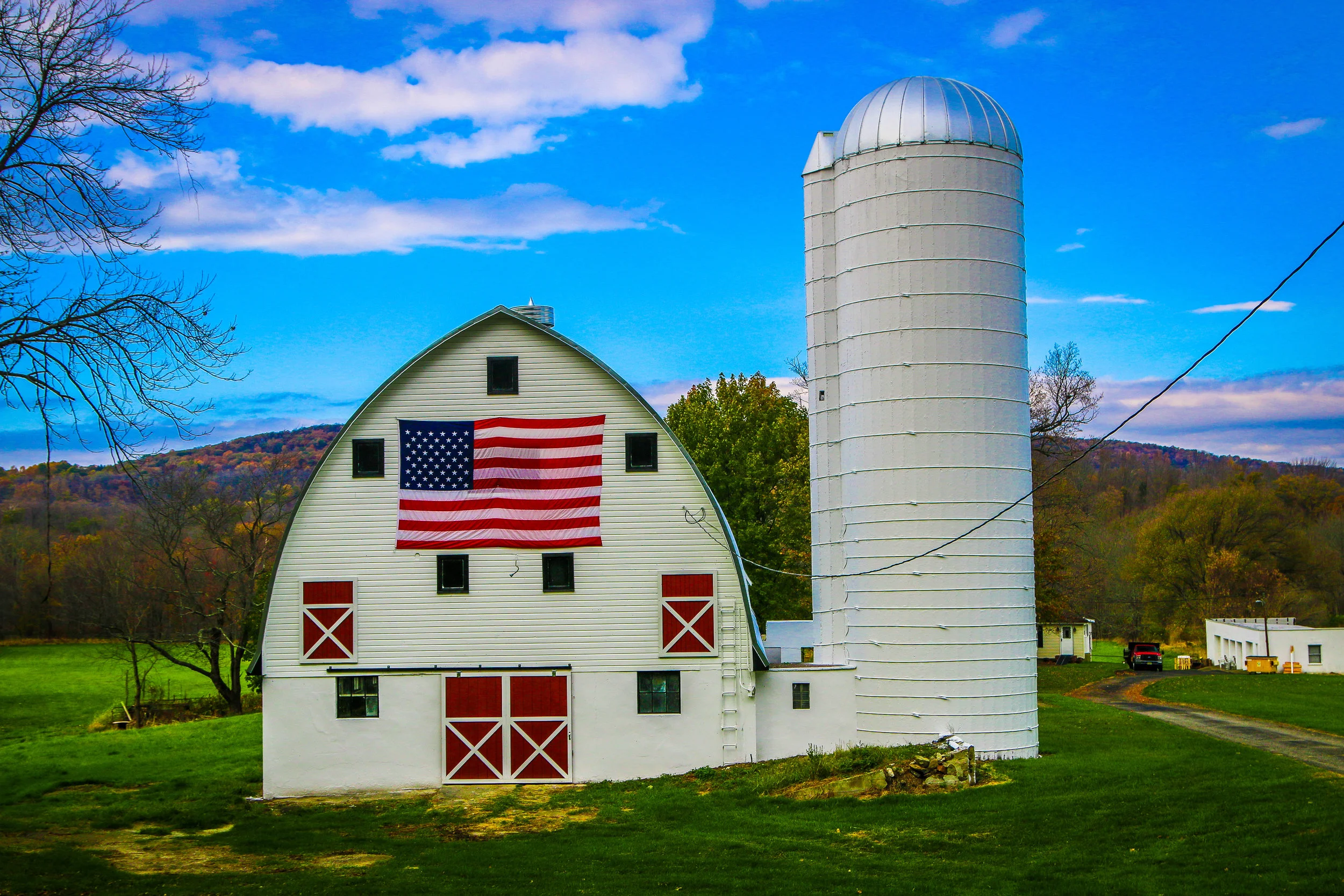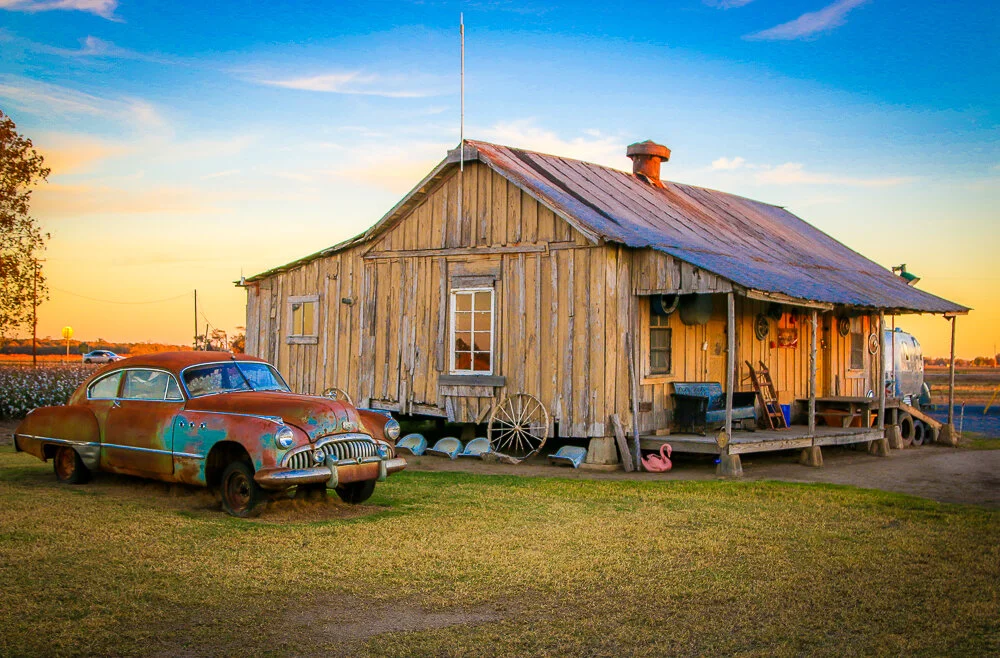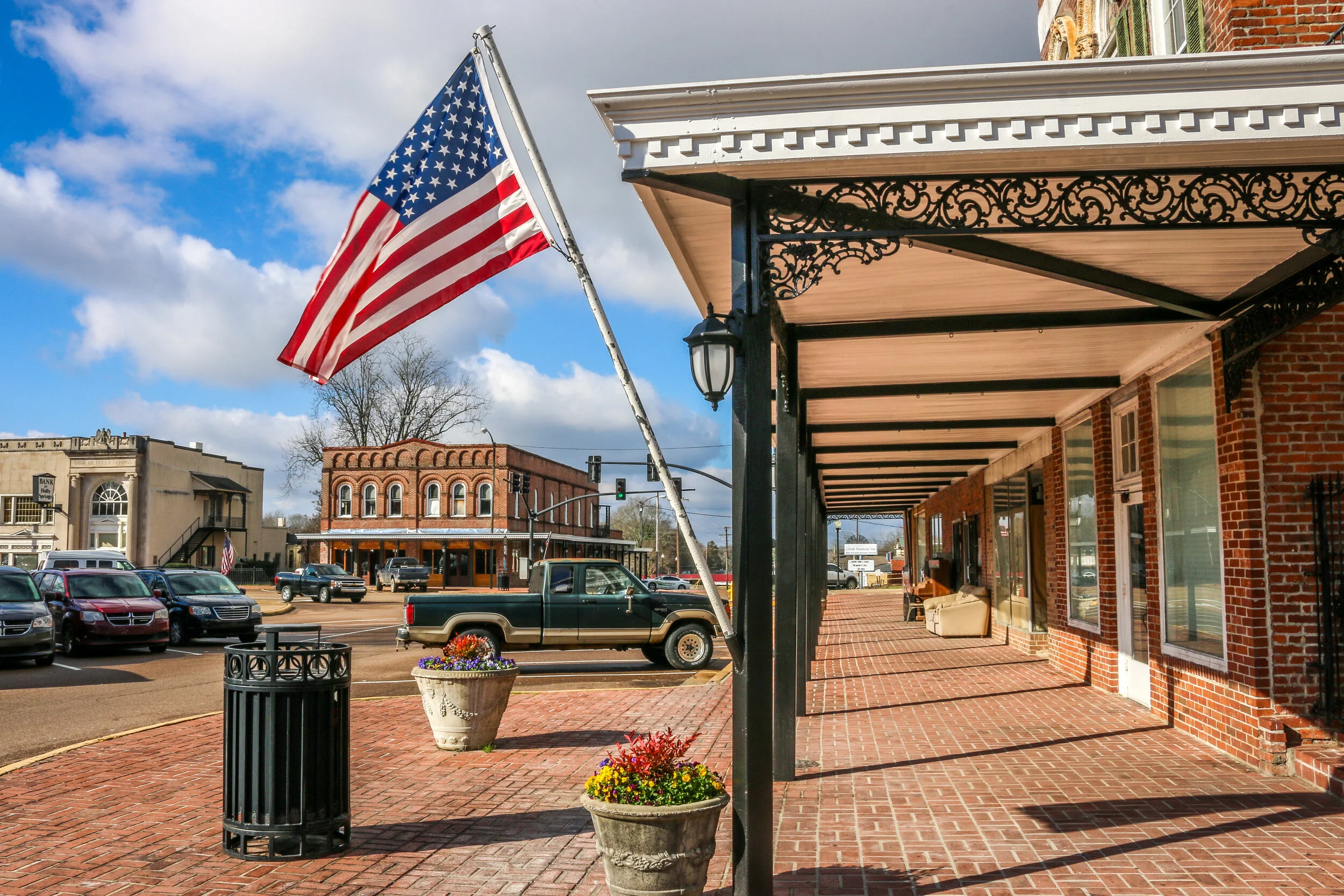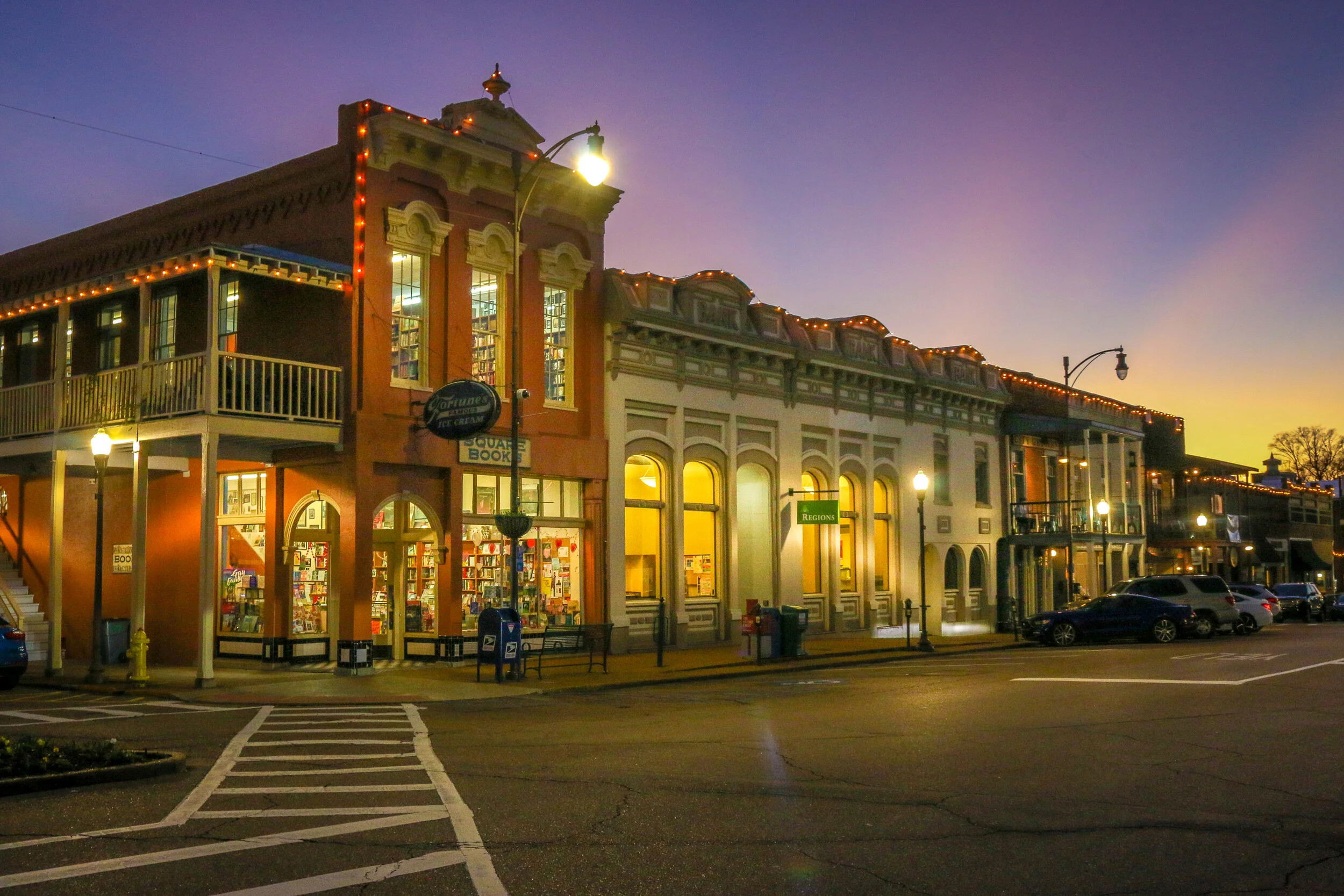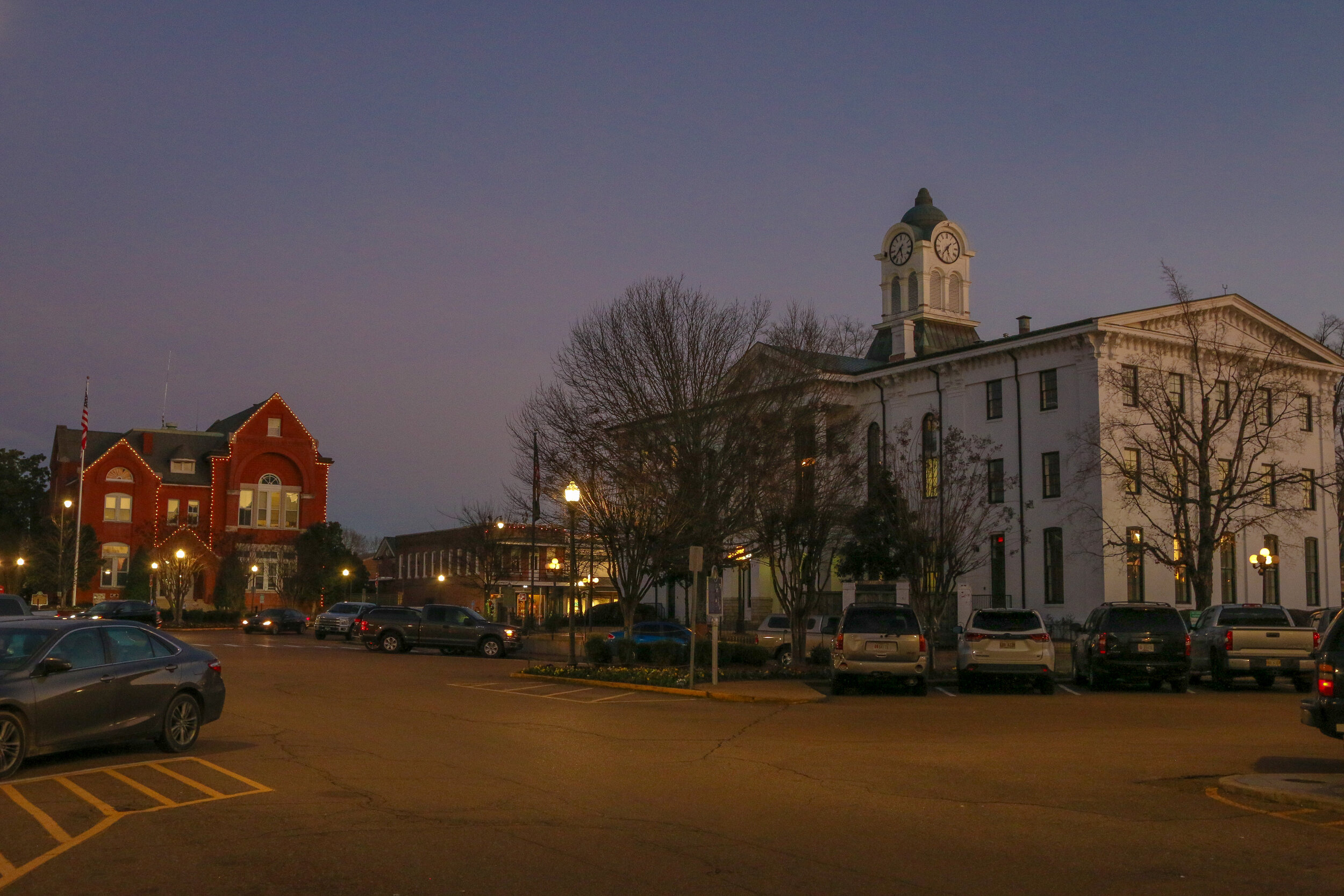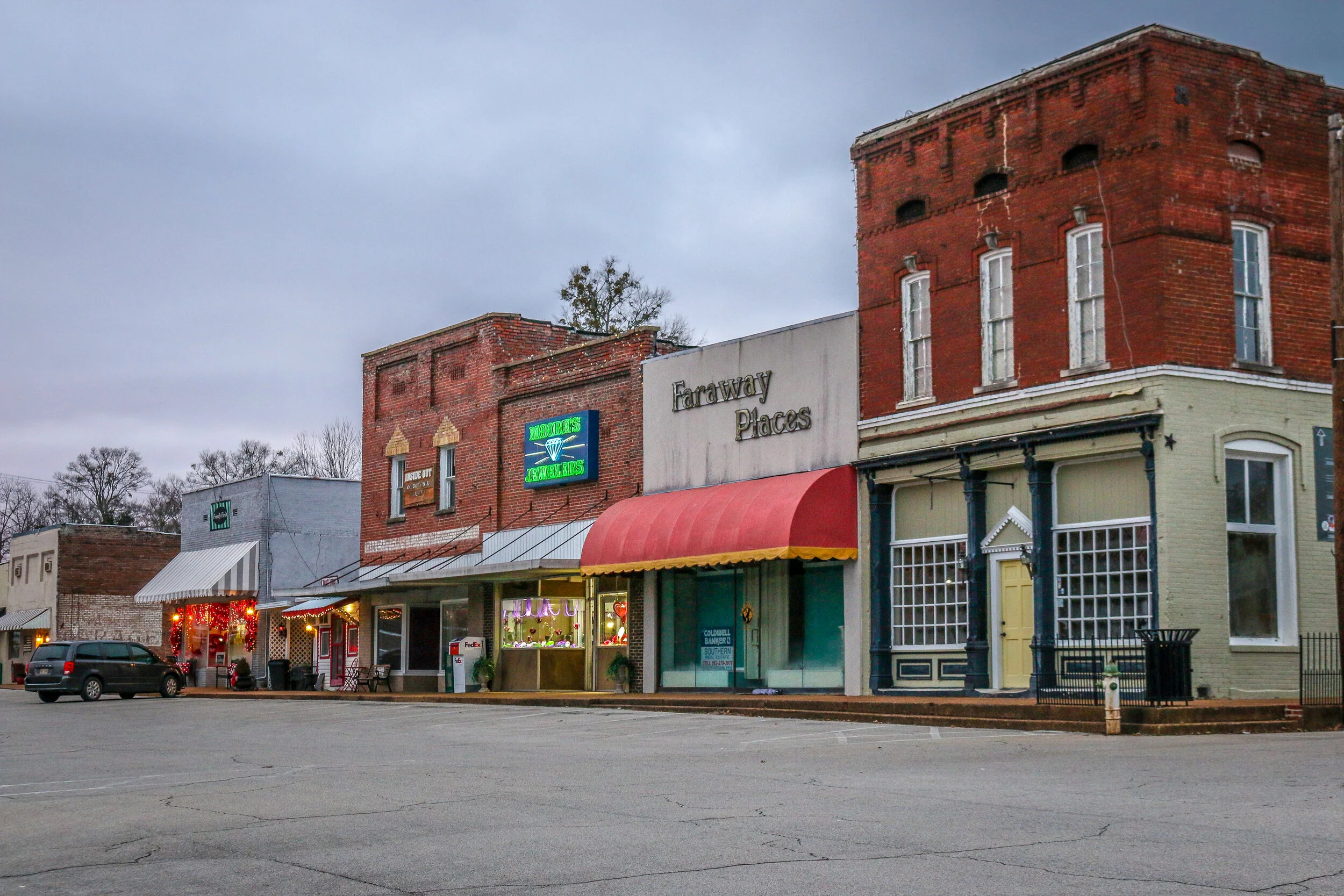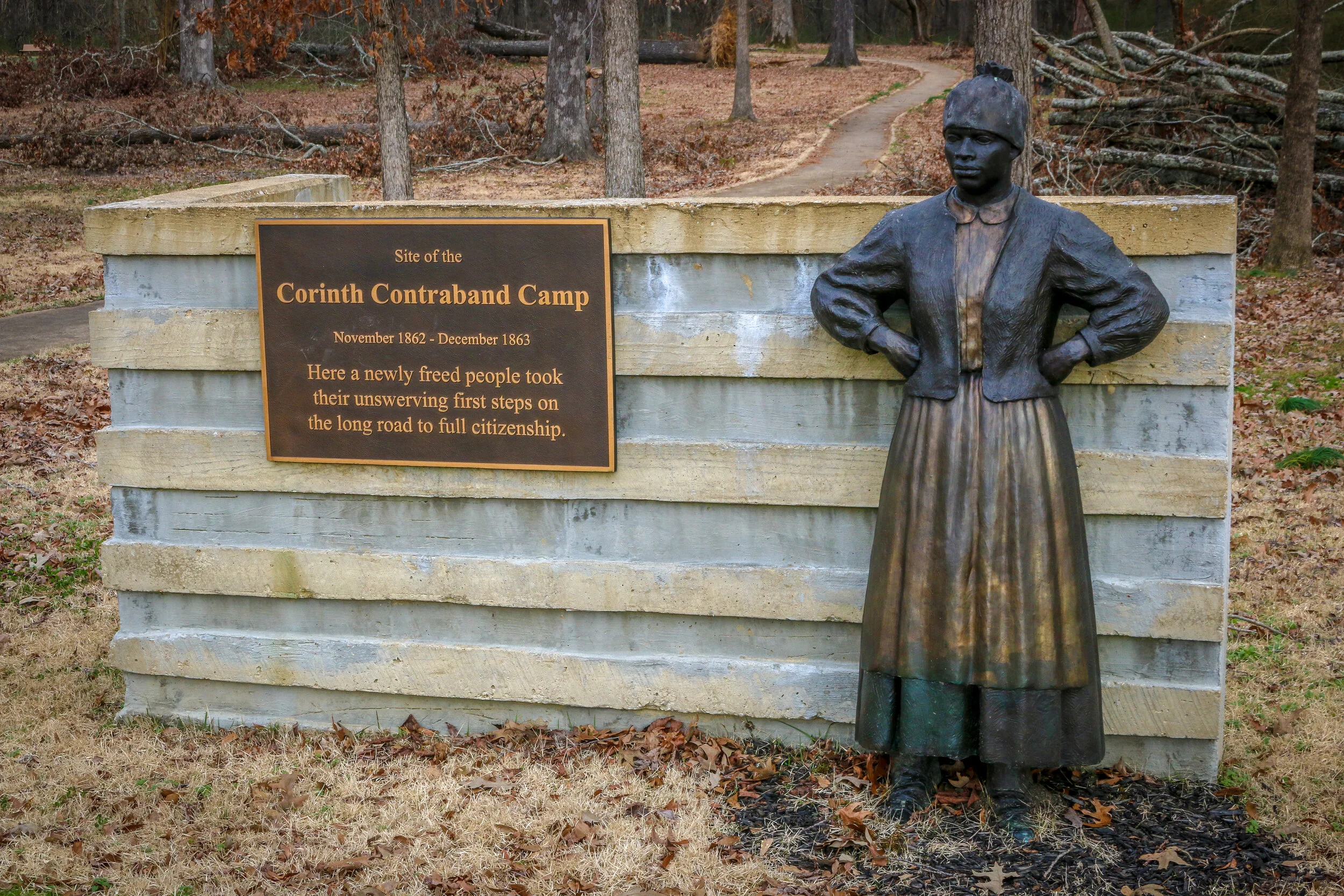Hello Everyone,
It’s great to see you, and I’d like to extend a very warm welcome to our new subscribers this week, I’m happy that you’re here. It’s been a pretty quiet week here in Mississippi, but a busy one as well. I haven’t done a lot of traveling, but I’ve been to some pretty cool places and met some wonderful people. This week has brought me from Columbus back through to middle of the state with stops in French Camp, Kosciusko and Winona. I spent a couple of nights Cascilla in a pretty rural part of the state with my friend John and his family, and then wound up the week traveling northwest into the Mississippi Delta. Of all the time I’ve spent in Mississippi in the past, most of it has been in the Delta, so it’s pretty comfortable to me. I love it here, and have always been fascinated by the music and the culture. Sadly, I know that poverty levels in the Delta are high, and that this factor contributes to both the music and culture of the region, but I’ve also seen the region develop a reasonable tourism industry in the 15 years or so I’ve been coming here, and hope conditions continue to improve for the area’s residents. Regardless of any of that though, it’s always great to be back in the Delta.
When we last we spoke, I had just pulled into Columbus, in the far east of the state near the Alabama border. My first impressions of the town were good, but my lasting impressions were even better. I really found it to be a delightful and hospitable town full of history with surprises around every corner.
Water Valley is an endearing small town of about 3400 people in Yalobusha County in North-Central Mississippi. Settlers began moving to the area after the treaties of Dancing Rabbit Creek and Pontotoc which would push the native Choctaw and Chickasaw people out of the area. Cotton plantations began to spring up in the region with most of the cotton traveling to market along the Yalobusha and Yocona Rivers. Then the Mississippi Central Railroad came to town in 1860 and Water Valley became a bit of a boom town. Beautiful Victorian homes were built and downtown was thriving. The Civil War came to Water Valley in 1862 when Union forces occupied the town. After the war, Water Valley would thrive again, but when rail traffic was diverted elsewhere the town would begin a long slow decline. Some time around 2008, Water Valley underwent a renaissance as people began to discover a beautiful town with cheap real estate and empty storefronts. Today, Water Valley is starting to come into its own yet again. If it weren’t in the heart of Central Mississippi, I might even call it “hip”. It’s still quiet and a little sleepy, but you can feel renewal in the air. As I walked around, I saw a lot of people working in the empty buildings and turning them into something fresh and new. Meanwhile, Turnage Drugstore which has been in operation since 1905, is still at the heart of the community and remains a great place to visit, grab an ice cream and catch up on the gossip (and get your prescriptions filled too, I assume). I really enjoyed this delightful little town…
Holly Springs was founded in 1836 on land previously occupied by the Chickasaw people after the Treaty of Pototoc Crreek forced them west. New settlers came to the region quickly and scrambled to buy up land and start planting cotton. As the county seat, Holly Springs grew rapidly as well and even more-so when the Mississippi Central Railroad came through in 1855. During the Civil War, the strategic nature of the railroad came into play and Holly Springs was occupied by Ulysses S. Grant and his Army of the Tennessee. Confederate Cavalry Commander Earl Van Dorn rode into Holly Springs before dawn on December 20th, 1862. The surprise attack temporarily cut off the Union supply route as Van Dorn’s men took all the supplies they could carry and burned the rest. After the war, Holly Springs would resume its role as a cotton center and railroad hub. Rust College was established in Holly Springs in 1866 to help educated newly freed slaves in the area. The college is still in operation today, making it one of the oldest Historically Black Colleges and Universities in the South.
Holly Springs today is a pleasant town of about 7500. I was thrilled to see construction going on while I was there and to find a Mississippi town which is growing and improving instead of deteriorating. There are a number of wonderful Antebellum homes to see in town, and the bustling town square has several restaurants and coffee shops when you get hungry. When I was there, I stopped in to the Visitors Center and spoke with Jamie who was super helpful in pointing out all the wonderful things Holly Springs has to offer. It should definitely be your first stop when you go to visit. I had a great day in Holly Springs and loved taking the photos you’ll see in this post. It’s a town on the rise, and I look forward to seeing how far it’s gotten the next time I’m in town.
The Square has been the heart of the town of Oxford since the town was founded back in 1837. The county which surrounds it was named Lafayette after Revolutionary War hero Marie-Joseph Paul Yves Roch Gilbert du Motier - the Marquis de Lafayette. Oxford took its name from the English home to Oxford University in the hopes it would help secure them a new state university, which it did in 1848 when the University of Mississippi or “Ole Miss” opened its doors. Ole Miss shut its doors during the Civil War when 135 of its 139 students enlisted in the Confederate Army. Sadly, all 135 were killed, most in the battle at Gettysburg. The town was occupied by Union forces during the war, and much of it was burnt to the ground in 1864. The town and university were rebuilt after the war, and both would go on to thrive, creating one of the wealthiest and most vibrant communities in the State of Mississippi. Today, The Square is still the heart of town and university life, with restaurants, shops, bars and one of the best bookstores in the country. I had a great visit to Oxford, and really fell in love with the photogenic central square. I hope you enjoy these photos of beautiful Oxford Square. Click on any image to enlarge it, and please contact me if you are interested in purchasing or licensing any of these images.
Hi Everyone, I hope this week’s This Week finds you all well. It’s almost February and I see spring at the end of the tunnel. It’s been a good week out here on the road, my first full week in Mississippi, with plenty of things to keep me occupied. I’ve visited some cool small towns, learned somefascinating history, eaten at some wonderful restaurants and caught up with friends old and new. It’s been good to be back on the road. Before I get started recapping my week for you, I want to give a big Thank You Shout Out to Todd, one of my subscribers, who sent me a huge list of recommendations for my time in Mississippi. Many thanks, Todd, your recommendations will come in really handy in the weeks ahead.
After leaving y’all last week, I did make my way out to the tiny town of Jacinto. The town was founded in 1836 and named for the Battle of San Jacinto in the Texas Revolution. It became the county seat of Tishomingo County and a stately two-story courthouse was built. In 1869, Tishomingo County was divided into three counties, Tishomingo, Alcorn and Prentiss, and the county seat of the new, smaller Tishomingo County was moved to Iuka. The town declined to the point where the courthouse was sold for scrap. Thankfully some concerned citizens stepped in to save the courthouse and the town. Nothing is open there in the winter, but it was still neat to wander around the courthouse and some of the buildings. It was really quiet and pleasant and there are a few houses and cars around so it’s not quite a ghost town, but it’s close. I did get a bit of a scare when I stood on my tip-toes to get a glance through the window and saw a life-like mannequin inside the courthouse. My heart jumped out of my chest.
From Jacinto, I headed down to Brices Crossroads Battlefield and wanted to visit the small Mississippi’s Final Stands Interpretive Center but unfortunately they had recently sustained some tornado damage…
The tiny town of Iuka, Mississippi (population 3,000) was founded by David Hubbard in 1857 along the route of the Memphis and Charleston Railroad. Built on the sight of an old Chickasaw Indian village, the town takes its name from one of the chiefs of that village, Chief Ish-ta-ki-yu-ka-tubbe . Iuka (pronounced “aye-you-ka”) was the site of the Battle of Iuka during the Civil War, an engagement between Union General Rosecrans’ Army of the Mississippi and Confederate General Sterling Price’s Confederate Army of the West. The battle resulted in over 2300 casualties before Price withdrew his troops and marched on to join General Van Dorn in the 2nd Battle of Corinth. The Brinkley House, also called Dunrobin, was used as General Grant’s Headquarters during the battle, and is a really cool antebellum home.
Today, Iuka is a charming little town with a cute downtown area and a wonderful park. The park’s centerpiece is the Iuka Mineral Springs, where natural spring water flows for all to enjoy. I really liked this park for some reason and enjoyed taking photos of the old playground equipment which reminded me of the things I played on when I was a kid. Iuka has a beautiful War Memorial and a history museum in their old courthouse which was sadly closed during my visit. There were also several beautiful churches and some neat looking shops. Much like my visit to Corinth, short days and cold weather kept me from exploring too far afield, but I thought Iuka was an adorable little town and that these photos would give you a feel for my visit.
Corinth was my first stop in Mississippi. I came to learn more about the Mississippi side of Shiloh National Military Park history, and to see the infamous rail crossing which was of such strategic importance during the Civil War that both sides suffered enormous casualties trying to secure it. I also wanted to learn more about the “Contraband Camp” which grew from enslaved people fleeing behind Union lines. You can see my photos from the Tennessee side of the battle HERE and from the Contraband Camp HERE. I thought both were really interesting, but while I was in town I thought I would have a wander and take a few photos. The weather was overcast until right before I left, and it was really cold out and dark by 5, so I didn’t get to see as much of it as I would have liked. I know there is a lot more to Corinth than these photos, but I still thought I would share them with you here. It was a beautiful town with a fascinating history and definitely worth a visit. Corinth was originally called Cross City when it was founded in 1853 at the crossing of the Mobile & Ohio and Memphis & Charleston railroads and is today home to about 15,000 people.
Hey Y’all,
It is great to be back on the road and it is great to be back writing This Week on the Road. I’ve missed you all, and this weekly post and this journey. While it was definitely good for me mentally to go back to work for a few months and then spend some quality time with my friends and family back at home, I feel really good and very blessed and happy to be back on the road.
I left home in Washington DC last Thursday and aimed for my dad’s place in Charleston, West Virginia. It was a cold and windy ride through the mountains, and snow whirled and blew as Shadow Catcher and I made our way west. The winter blast made me happy we were heading south and it felt good to have months ahead of us and only our plans and our wits to guide us. It was wonderful passing through and past some of the earliest destinations of this journey when we first set out way back in November of 2017. It was cold then too and the days were short, and my dad’s place was definitely a point of refuge as I got all of this off the ground. But driving past exits for Blackwater Falls and Weston and Morgantown and Harpers Ferry all brought a huge smile to my face. We’ve come a long way since then and it was good to take a drive down memory lane.
I spent 2 days with my Dad and Judy, and it was great to catch up with them and enjoy their company. I helped them with a few things around the house and they took me out to a nice meal. It’s always great to see them, and it was my last taste of home for a while.
We set off from Charleston on Saturday, headed west into Kentucky and then south from Lexington into Tennessee. This ride took us past even more wonderful memories from this journey…
The Corinth Contraband Camp was established in the wake of the Battle of Shiloh and the subsequent occupation of Corinth by the Union Army. Enslaved people in the area fled behind Union lines, seeking safety from their masters with the Union Army. The army saw the strategic value in providing these people a safe haven. The former slaves were put to work to aid the war effort, and were paid for their time and allowed to pursue an education with missionaries who came from the North. They built homes and gardens for food and even planted cotton to aid the Union Army. Many young men who made their way to the camp enlisted in the army – first used as cooks and laborers and later armed as the 1st Alabama Infantry Regiment of African Decent (later the 55th U.S. Colored Troops). These troops were used in combat at Brices Crossroads and Waterford in 1864. The camp was a model for others of its kind springing up across the South. It was the first step for these people on their road to freedom. More than 6,000 people passed through the Corinth Contraband Camp during the year it was operational. The camp was abandoned in 1864 as Union efforts consolidated in Memphis, and not much remains there today. The open site is part of Shiloh National Battlefield, and the wonderful sculptures in these photographs were produced by Larry Lugar, a sculptor from nearby Memphis. I think they are wonderful depictions and show the determination these newly freed people showed under adverse conditions during their time there. It might not have been paradise, but for the first time in any of their lives, they were free.
The Battle of Shiloh took place on April 6th and 7th, 1862 in the woods near the Tennessee River just north of the Mississippi border. The battle takes its name from a log church which was there at the time and built by the settlers in the area. The word ”Shiloh” sadly comes from the Hebrew for “Place of Peace”, but in our history it will forever be remembered as a place of terrible, bloody conflict. The Union was moving down the Tennessee River with the hopes of capturing and controlling the Mississippi River Valley. One of the keys to that goal was the important railroad crossing in nearby Corinth, Mississippi, which linked the Mississippi and Charleston and the Mobile and Ohio Railroads. The first was the only rail link between the Mississippi River and the Atlantic Ocean. After a decisive victory at Fort Donelson and the subsequent falls of Nashville and Clarksville, the Union Army set their sights on Corinth, and the Confederacy rushed to reorganize and defend it…
Hi Everyone,
I just wanted to wish all of you a very Happy Hanukkah and a Merry Christmas from me! I feel very fortunate to be home for the holidays this year and happy to celebrate with friends and family. I’ve got two new babies in my close friends network, so it has been amazing to see them start out on their journeys. I also had a great opportunity to go visit my brother for a week in New Hampshire and see his beautiful new home. We got two feet of snow when I was there, so I have gotten my shoveling in for the year. With any luck I’ll be very far south of where I am now before any more snow hits. It was truly beautiful and amazing to see, but I also remember why I tend to avoid the cold weather.
I’ve been home for a little over a month now and I’m finally starting to feel like I’m catching up on all the things that I need to do before setting out again. I’ve been to the doctor and the dentist, seen a lot of old friends and gotten to catch up with my family and help out around the house. I’ve also been hard at work on all of my projects and am starting to see a light at the end of the tunnel. You can check out these updated photo galleries to see some of the progress I’ve been making:
During my month in Hawaii I visited Oahu twice, but only for a total of four days. I enjoyed a lot of the historic buildings in Honolulu, especially Iolani Palace. Pearl Harbor was fascinating and heartbreaking, the North Shore was full of amazing scenery and cool places to stop and poke around, and Waikiki had a beautiful beach and some wonderful recreational opportunities and nightlife. It was always hectic when I was there as I was running around trying to get trips started and dealing with taxis and rental cars, but when I finally had a little bit of time and space to breath, I really enjoyed my brief visit to Oahu. Although I didn’t have time to take a lot of photos there, I quite like some that I did take. I hope you do too.

